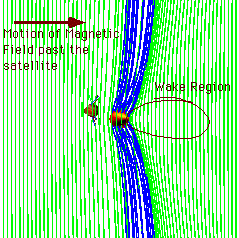This image shows the magnetic field lines of a planet passing by a moon and creating a wake.
Click on image for full size
J. Linker
Wake
A moon which is inside a magnetosphere usually travels slower than the magnetic field. This means that the magnetic field lines will pass over the satellite like water going around a rock. Because the moon is made of conducting material, the magnetic field will be delayed in passing around the moon. Thus the field lines will be distorted in passing over the satellite. Eventually they straighten up. The region upstream of the satellite, in the magnetic field of the planet, is called a satellite wake.
This satellite wake is different from the satellite geometric wake. The satellite wake extends in front of the satellite, in the direction in which it is moving, while the geometric wake extends in the opposite direction from the line between the satellite and the planet, and is similar to the shadow of the satellite.
You might also be interested in:
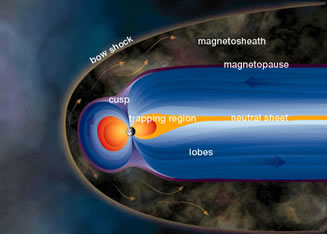
A magnetosphere has many parts, such as the bow shock, magnetosheath, magnetotail, plasmasheet, lobes, plasmasphere, radiation belts and many electric currents. It is composed of charged particles and
...more
AU stands for Astronomical Units. Distances in space are too large to measure in Earth standards like miles or kilometers. For distances too large to measue in AU, we use light years. A light year is the
...more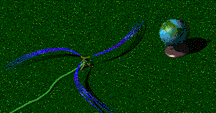
The solar wind is formed as the Sun's topmost layer blows off into space carrying with it magnetic fields still attached to the Sun. Gusts and disturbances form in the solar wind associated with violent
...more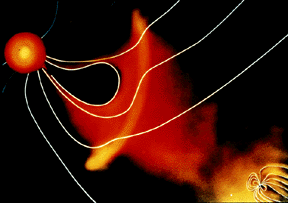
For a planet to be affected by a blob of material being ejected by the sun, the planet must be in the path of the blob, as shown in this picture. The Earth and its magnetosphere are shown in the bottom
...more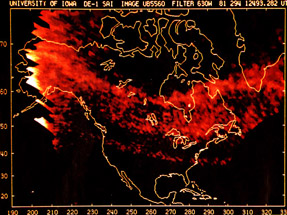
The aurora we are most familiar with is the polar aurora. This is what people are referring to when they speak of the northern or southern lights. But there are other less-known auroral activity, such
...more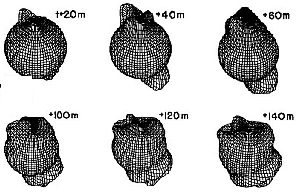
This figure shows the effect of the aurora on the atmosphere. When FAC's enter the atmosphere and create the aurora, they warm the atmosphere impulsively. This impulse travels throughout the atmosphere
...more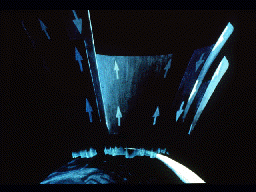
This picture illustrates the streaming of particles into and out of the auroral zone, as Field-aligned currents (FAC's) short-circuit through the ionosphere. Some of the particles entering the auroral
...more


